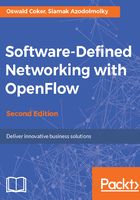
Network automation and virtualization
Network automation can be described as a process by which tools are deployed, which allows the automation of configuration, management, and operations of the network by the network administrator. As a result of this, the network administrator has the ability to tailor the network to fulfill the business requirement in real time. The SDN architecture better supports network automation in comparison to traditional network architecture.
Ansible and Puppet are common examples of automation and orchestration tools that assist network administrators with tasks ranging from the management of configuration to deployment of applications seamlessly. Automation makes the network flexible, resilient, easy to manage, and responsive to business needs in real time, which results in reduced operating expenses.
Network virtualization is the abstraction of the physical network to support the running of multiple network logical instances on a common shared physical element. This supports rapid innovation, as services can be at software speed across the entire network.
SDN controllers provide both automation and virtualization to the network by utilizing the northbound and southbound API to communicate with the applications and forwarding elements.